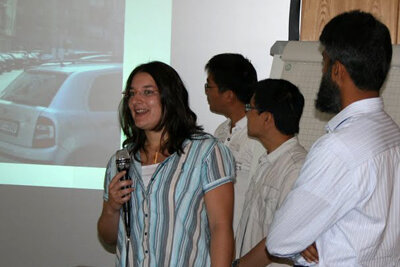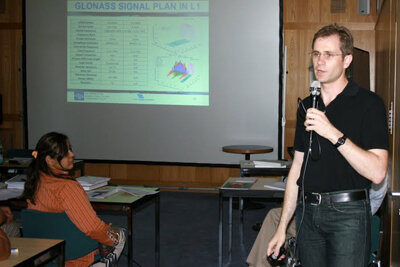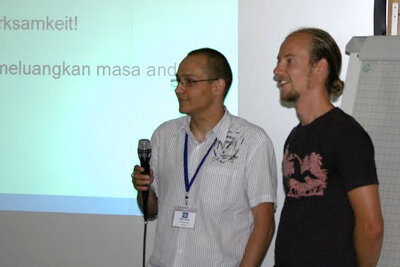Satellite navigation for students at ESA summer school
As part of its long-term strategy to foster education and promote the transfer of knowledge to the next generation of engineers and scientists, ESA has supported this summer the International Summer School on Global Navigation Satellite Systems (GNSS).
The GNSS summer school was first introduced in 2007. This year, there was close coordination with ESA's Education Office and the ESA directorate of Navigation. The meeting was organised by the Institute of Geodesy and Navigation of the University FAF Munich in cooperation with Stanford University (USA) and the Institute Superieur de l'Aeronautique et de l'Espace (France), with additional support from the University of Aalborg (Denmark) and Graz University of Technology (Austria).

A total of 46 students from 17 different countries participated in the ESA International Summer School entitled Global Navigation Satellite Systems: A Worldwide Utility, which took place 20-30 July in the Berchtesgaden Convention Centre, south East Germany. They included students from China, Russia, Australia, Pakistan, Malaysia, Ukraine and Poland, as well as ESA Member States.
In recent years, GNSS have become a key component of the world’s information infrastructure, opening up new market capabilities and facilitating innovation and efficiency in safety, environment, science and public security.
Until now, the U.S. Global Positioning System has dominated the market, but a number of new systems are being planned or are in the process of being introduced, including the European Galileo constellation being developed by the European Commission and ESA.
Not surprisingly, satellite navigation has been identified by ESA's Education Office as one of the key areas in which specific efforts should be made to facilitate the transfer of knowledge to the next generation of engineers and scientists.

The objective of the ESA summer school was to provide university students, early-stage researchers and young professionals with a comprehensive overview of the design and development of such satellite navigation systems, as well as their applications. The meeting was seen as an essential part of ESA's educational remit, since universities typically provide courses in specific fields of engineering, whereas satellite navigation requires an interdisciplinary approach. The programme was received enthusiastically by the attendees.
"The ESA summer school is a great opportunity for GNSS learning, cross-cultural networking and exchange of experience," said Iva Bartunkova of the Czech Republic.
"The summer school is a strongly recommended experience in terms of international team working and education on satellite navigation," commented Roland Bauernfeind from Austria.
In addition to lectures on fundamental aspects of satellite navigation by internationally renowned scientists, the programme covered the US Global Positioning System, Russia’s GLONASS, Europe’s Galileo system, the Chinese BEIDOU/COMPASS, the Japanese Quasi-Zenith Satellite System and the Indian Regional Navigation Satellite System (IRNSS).

The summer school also included a competition in which groups made up of students from different countries were asked to propose a new, innovative GNSS-related application. The entries had to include a complete description of the proposed product/service and the technical approach for its implementation, as well as market analysis and a marketing summary. Each team gave a final presentation to a jury of experts from several European universities and Stanford University.
The proposals included an impressive variety of applications, covering areas such as social services; agriculture; contributions to science; games and entertainment; governmental services; improved technologies; security; and tourism.






